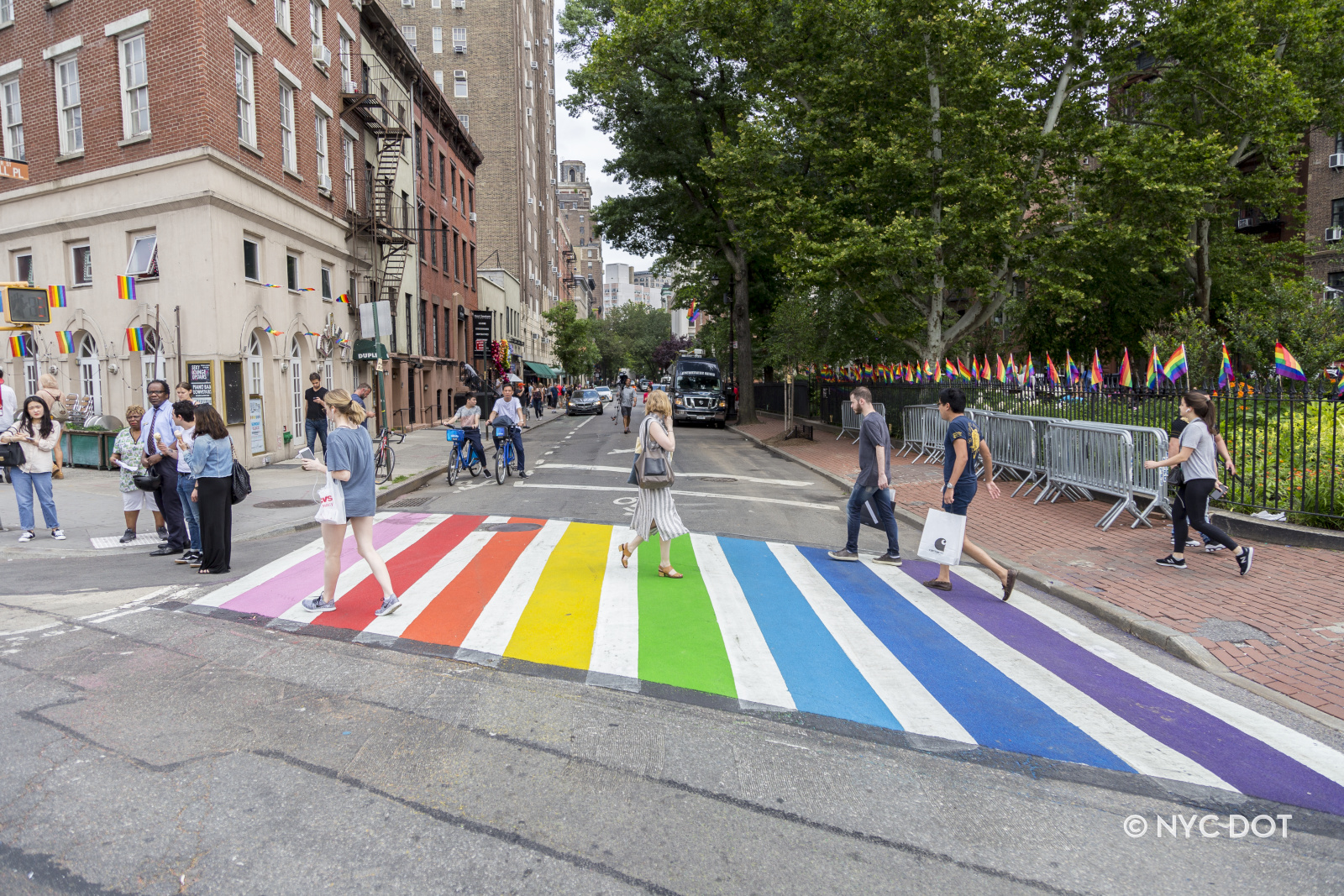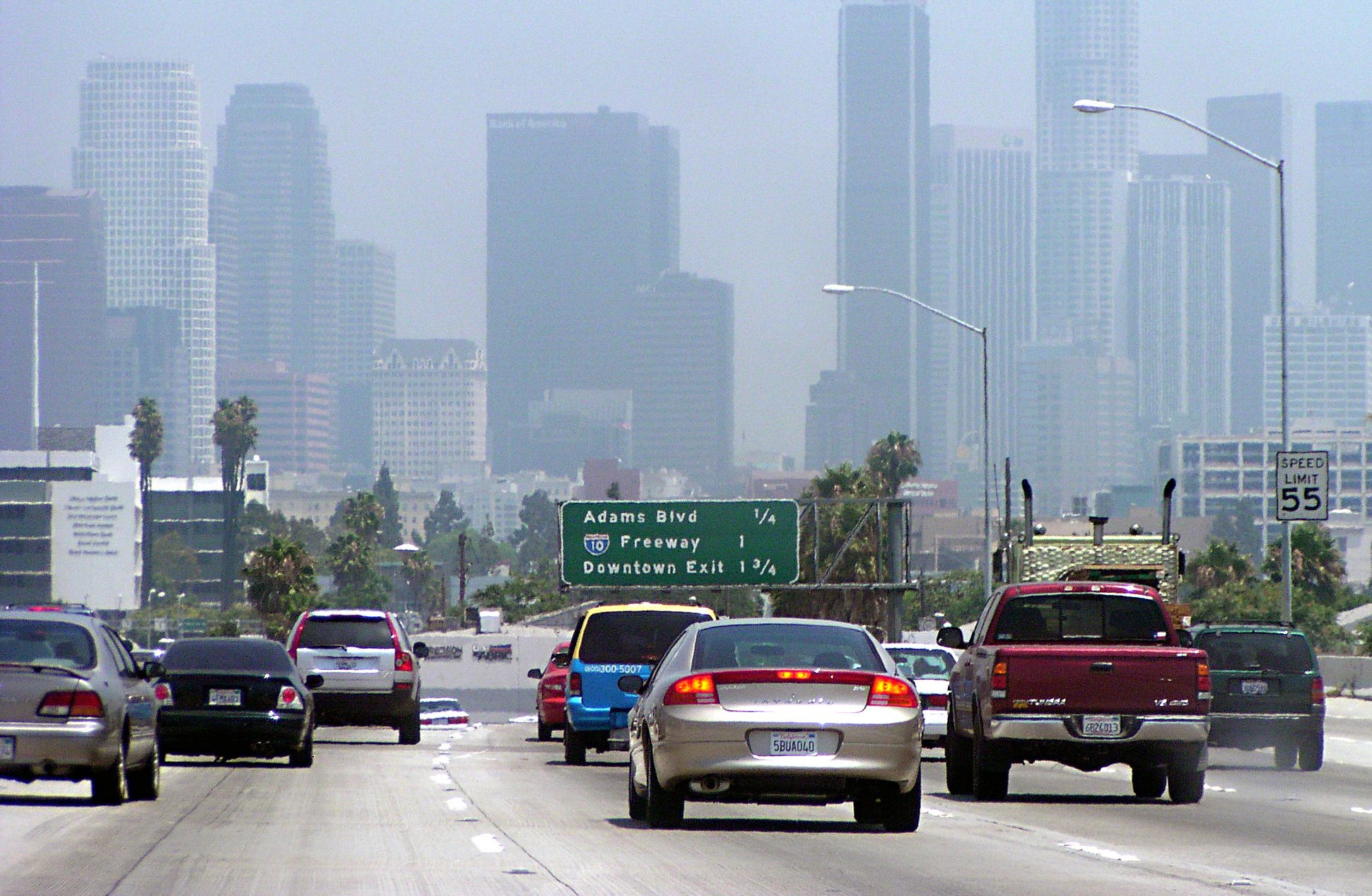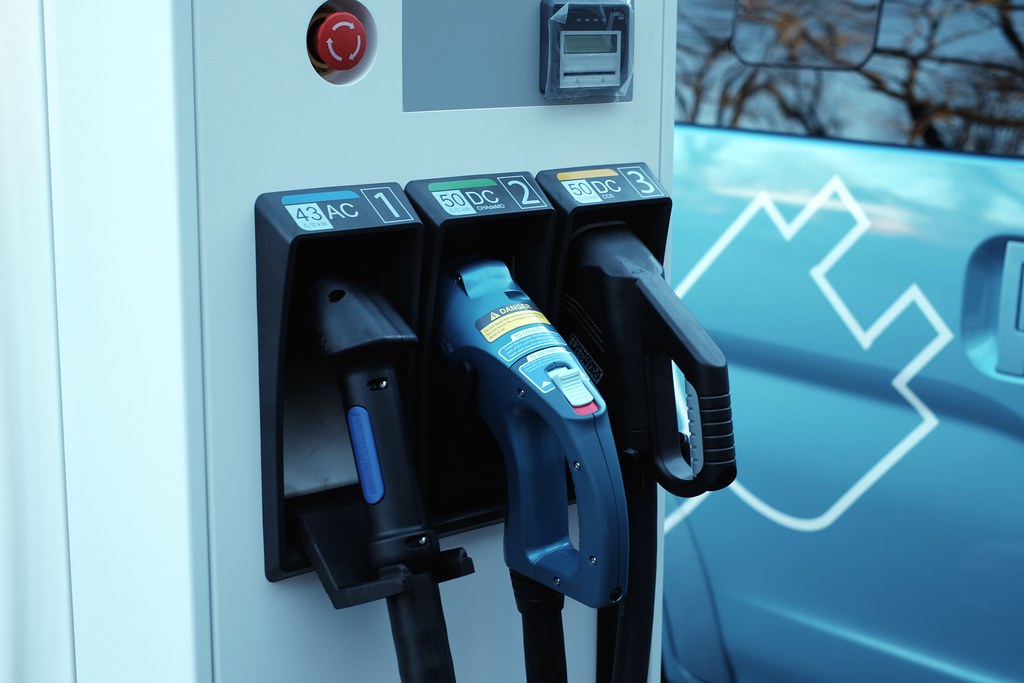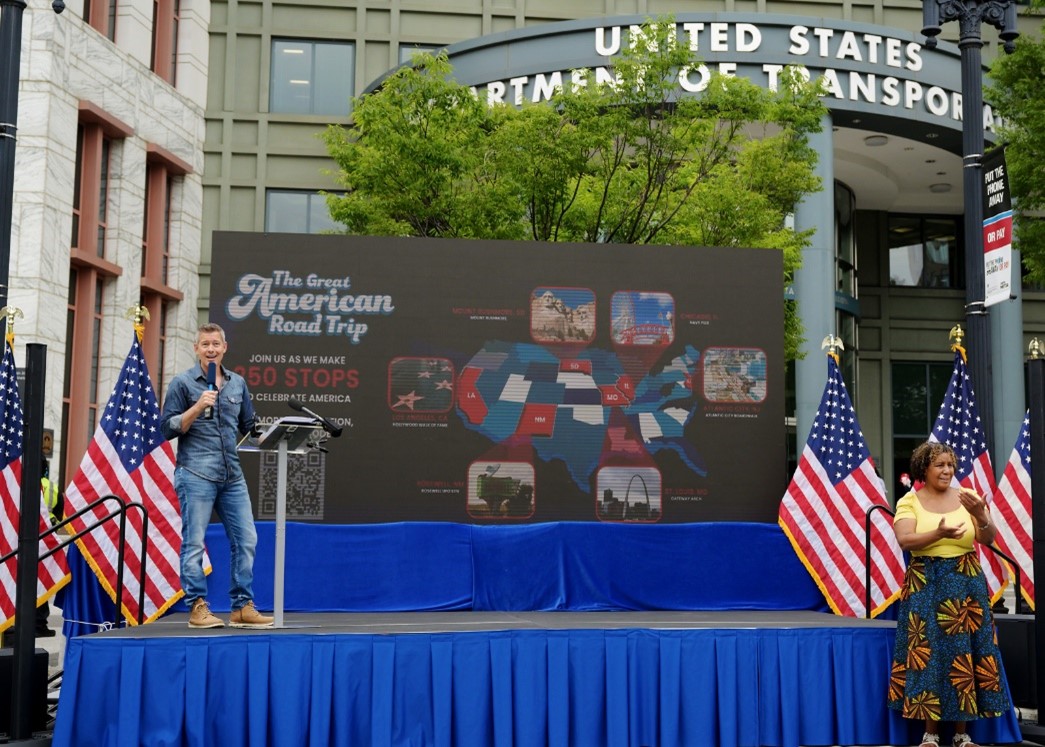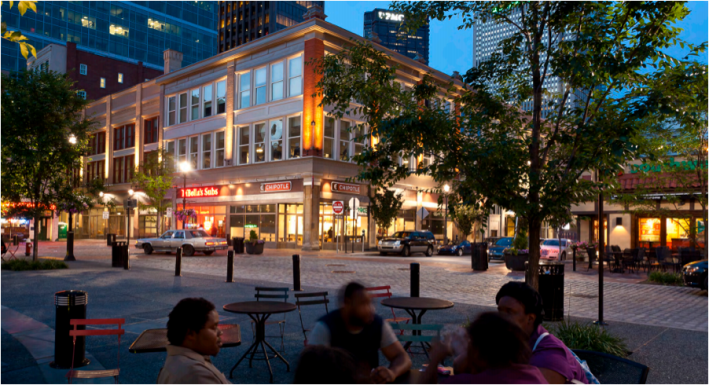
Summer is finally here, but livable streets advocates already can’t wait for September to come. The biennial Pro Walk/Pro Bike/Pro Place conference is taking place in Pittsburgh, a city that's shedding its "Rust Belt" image and emerging as a leader in progressive street design with the help of a new mayor who’s committed to biking, walking, and public space.
Over the course of the summer, we’ll be previewing some of the great research and success stories that will be told at the conference. This is our first post in that series. Today, we're spotlighting one type of innovative design that Pittsburgh is increasingly becoming known for: "shared space."
As Payton and John have described on Streetsblog this week, shared space is a way of designing streets for cars, bikes, and pedestrians without segregating them. By removing curbs and traffic signals, planners allow everyone to navigate the street using their own common sense and by communicating verbally or non-verbally with others.
Three recent projects in Pittsburgh have utilized the shared space concept. “It’s a change in thinking about how that space is used that elevates the status of pedestrians and cyclists -- more pedestrians than anyone -- over the car,” said Michael Stern, an architect at Strada, the firm that designed the three new shared spaces. “So that’s a big change.”
In Market Square, where drug deals used to be conducted in plain view, a major redesign has attracted nearly a billion dollars in new development. In addition to offices surrounding the square, there are almost 500 new residential units and 32 restaurants within a block and a half. Many of the 20 dining establishments that encircle the plaza have patio seating on brick sidewalks that blend into the cobblestone street, with no curb separating them. On the other side of the street, the plaza’s terrazzo floor is also at the same grade.
That cobblestone street is known as Forbes Avenue, and it used to cut straight through the square. Now it goes around it. “It has become a really great pedestrian space with slow moving traffic, and limited traffic because everyone knows you’re not going through there quickly,” said Jeremy Waldrup, president of the Pittsburgh Downtown Partnership. Buses that used to go right through were re-routed to neighboring streets too, keeping transit access within a half block but keeping the large vehicles out of the square.
Cyclists complain about the cobblestone, but Waldrup says that doesn’t bother him. “Not every space has to be built optimally for every mode,” he said. The net effect is that “pedestrians rule,” according to Stern. “People will walk wherever they want to walk. If a car comes in there, it’s very clearly understood as a pedestrian space as opposed to a car space.”
Could they have taken out cars altogether? Stern says they floated the idea but the retailers and restaurateurs just couldn’t get behind it. Plus, they had to fight the stigma of the pedestrian mall.
Meanwhile, on the waterfront, Stern helped develop the Rivers Casino area. Rather than being part of the casino, it’s a part of the waterfront, with an amphitheater that carries free, family-friendly progamming. They connected the area to surrounding bike trails with a path for biking and walking. Though cars don’t share that space, Stern says even getting people on foot and on bikes to share a 40-foot wide esplanade without markings was “a learning curve for Pittsburgh.”
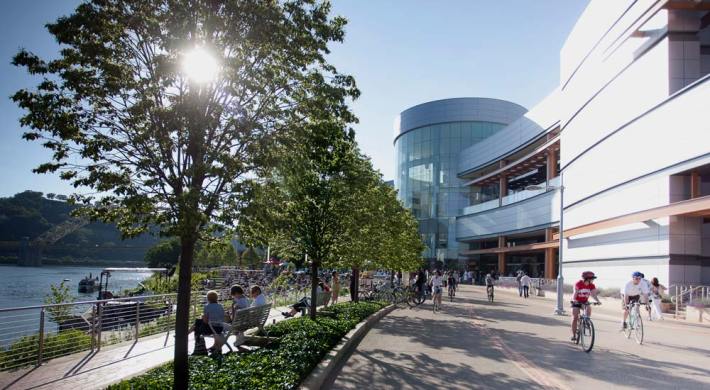
The third Pittsburgh experiment with shared streets is Bakery Square, a private development that is currently in the midst of an expansion. Some of the streets within the development will make use of shared space concepts.
Bakery Square has some unfortunate geography working against it: It’s lined on one side by a high-speed arterial road, Penn Avenue. While Stern would have liked to calm it, the city went the other direction and just widened it.
Within Bakery Square will be dedicated bikeways and shared paths for people walking and biking. There will be also a shared street through the middle of the development where cars mix with everyone else, but where the only through traffic permitted will be walking and biking, not motor vehicles. “It’s meant to be this mixed environment that will hopefully privilege the pedestrian and the cyclist above everyone else,” Stern said. “You can get to it in a car if you need to, but we worked hard to minimize that.”

Loading docks will be accessed via side streets, so trucks don’t need to enter the shared street.
Still, the speeds and volume of cars on Penn Avenue could jinx the project. “You can’t really walk there from most places because it’s disconnected except along Penn Ave,” Waldrup said, “which, particularly in that stretch, has been a less pedestrian-friendly corridor so cars tend to race through.”
Stern said the key to a shared street is a slow traffic speed, maxing out at 15 or 18 mph, giving drivers time to react to minimize collisions. “Then you have to add other infrastructure that lets them know they’re in a different environment,” he said. “So whether it’s different kinds of paving or planting, or other visual or physical cues that lets them know: You’re not on a highway anymore.”
